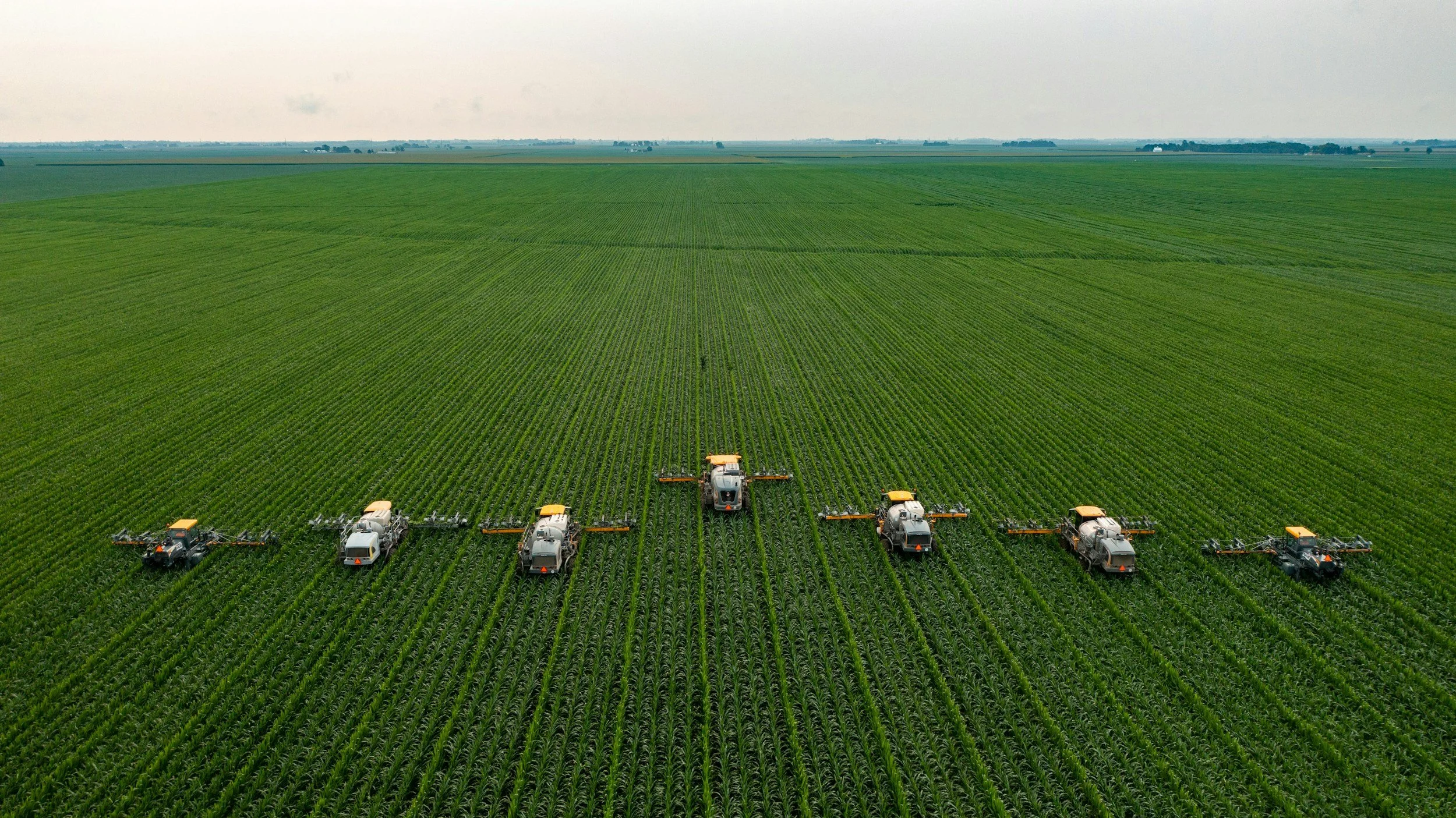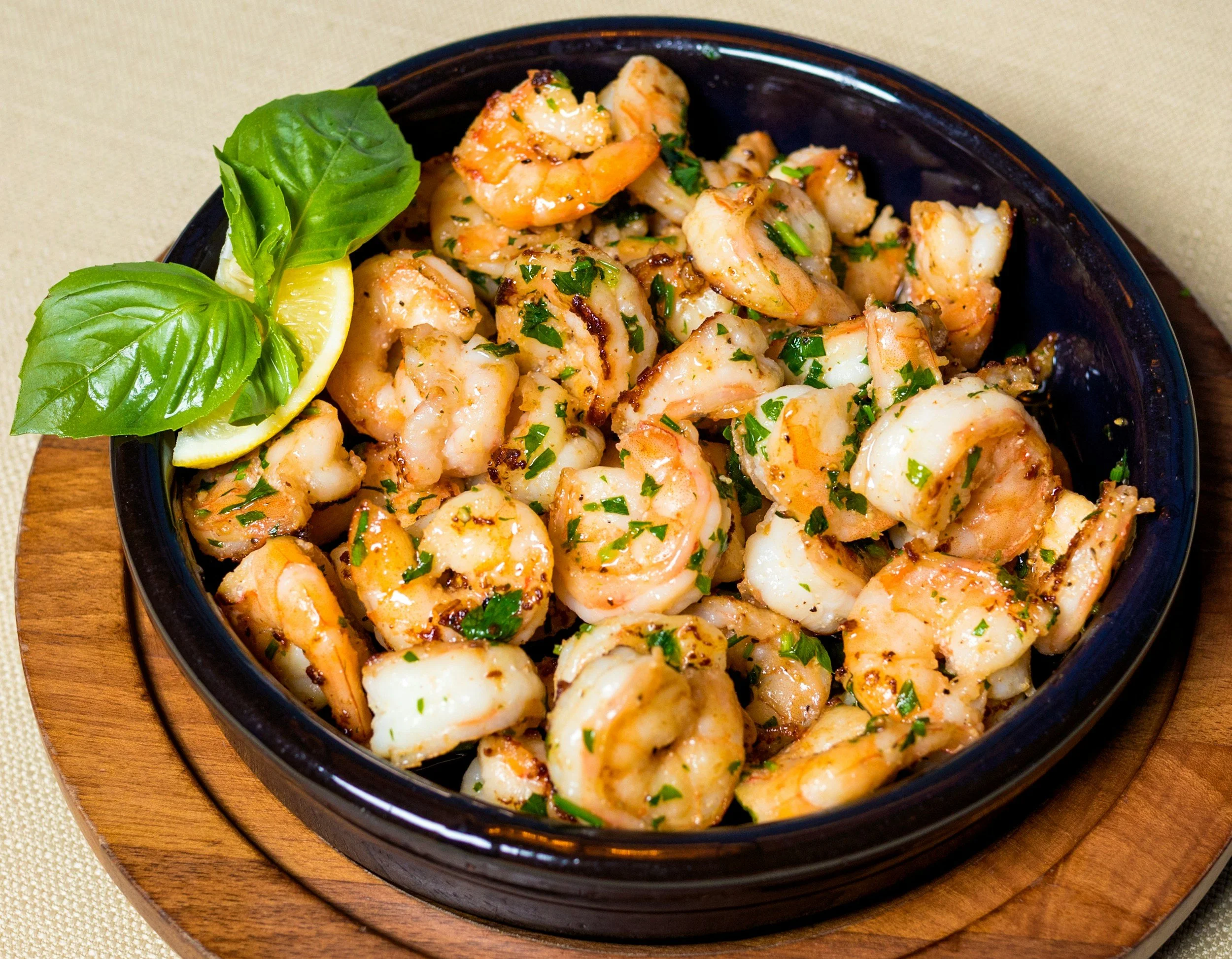Fall Companion Planting Guide: 10 Tips for a Successful Harvest
/As the days grow cooler and the leaves transition into hues of orange and gold, it’s time to embrace the possibilities for fall gardening. This season, why not maximize your yield and improve the performance of your crops by companion planting?
Companion planting is a fantastic way to increase the output of your vegetable garden and ensure a bountiful harvest during this season. Companion planting can be done in virtually any growing season (except perhaps the coldest seasons, if you live in an area where the winter temperatures are freezing), but it may take a little extra knowledge and practice if you are doing it for the first time in your fall vegetable garden.
This guide provides you with ten essential tips for successful fall companion planting. At the end of the article you'll find a downloadable companion planting chart to help you know which plants could make great companions in your fall garden.
How Companion Planting Works
Companion planting is based on the concept that certain plants can help each other thrive when grown in proximity to each other. This symbiotic relationship can arise from various interactions, including nutrient sharing, pest deterrence, and optimal use of space. For instance, some plants can attract beneficial insects that prey on pests harmful to neighboring plants, while others might provide shade or support for shorter plants.
The key to successful companion planting lies in understanding the needs and characteristics of each crop. Some plants may enrich the soil with nutrients that are essential for nearby vegetables, while others could disturb growth or inhibit pollination. When selecting companions for your fall garden, considering factors such as growth habits, root systems, and nutrient requirements is essential. Using a plant profile sheet will help you create a handy reference to draw on as you plan your garden layout this fall.
In addition to promoting plant health, companion planting benefits biodiversity and averts the risk of pests taking over a single crop. By diversifying your garden, you create a more balanced ecosystem, which enhances resilience against plant diseases and pests.
Tip 1: Choose the Right Plants for Fall
As you prepare your fall garden for sowing, it’s important to select plants that are well-suited for the season. Look for hardy varieties that can withstand cooler temperatures, such as kale, Brussels sprouts, spinach, carrots and radishes. Consider plants that deter pests or that can improve the quality of your soil, including cover crops that you might normally plant in beds that lie fallow (i.e., unused) in the cooler months of the year. For effective companion planting strategies this season, you'll also need to choose plant varieties that thrive in the fall’s cooler weather and pair well with others; above all, you'll want to aim for creating a thriving ecosystem in your garden bed.
Also, think about incorporating legumes such as peas and beans into your fall planting scheme. These plants play the dual role of fixing nitrogen in the soil, which is beneficial for other crops. Leafy greens like spinach and Swiss chard are excellent companions for planting alongside root vegetables, as they don’t compete for space. When you mix these types of plants, you create an environment where each can contribute to a more productive and healthier garden.
Tip 2: Optimize Soil Health
Soil health is vital for a thriving garden, and if you've been growing plants in a bed (or pot) during the summer months, the soil will have become depleted of the nutrients that were used up by your summer crops.
To replenish these nutrients, add organic matter such as compost or well-rotted manure to your garden beds. You can also add worm castings for smaller areas. In addition to these, add in perlite or finely crushed eggshells. The organic matter enriches the soil and the perlite or eggshells will improve its structure, enabling good drainage. When layering organic materials, it's best to mix them into the top few inches of soil to encourage beneficial microbial activity. Some gardeners use the lasagna method of just adding on top; this is a sound method but requires a longer time for the nutrients to work on the soil and thereby benefit your plants.
One of the most important things you can do to improve or preserve soil health is to rotate your crops. If you planted heavy-feeding crops in the summer, avoid planting them in the same area for your fall garden. Rotate to lighter feeders or interplant your food crops with cover crops like clover, soil builder oats and hairy vetch, which not only enrich the soil but also protect it from erosion. These cover crops will alo add organic matter when tilled under the soil when they are finished growing, thus providing a nutritious boost for your next season crop.
Also, consider applying a layer of mulch to help retain moisture and regulate soil temperature as fall temperatures begin to fluctuate. This not only enhances soil health but also suppresses weeds, freeing up essential nutrients for your plants.
Common Companion Planting Mistakes
While companion planting can yield remarkable results, it's also easy to fall into traps that can negate these benefits. The next five tips focus on some common mistakes to avoid when planting your fall garden.
Tip 3: Don't Ignore Plant Compatibility
Not all plants get along, and planting incompatible species can stunt growth or attract pests. For example, planting onions or garlic near beans can inhibit their growth. Always do a bit of research on which plants can thrive together, and consider using a companion planting chart to reference as you plan. (Access our Free Resources library to get our companion planting chart and other free tools for your gardening needs.)
Tip 4. Avoid Overcrowding Plants
It can be tempting to maximize space by planting as many crops as possible. However, overcrowding can lead to poor air circulation, increased competition for nutrients, and a higher risk for diseases. Ensure that each plant has enough space, taking care to prune your plants as needed when they begin to reach their full size. Also, consider using vertical gardening techniques for vining vegetables like peas or pole beans to save ground space while allowing adequate air circulation.
Monitoring the growth of your plants regularly can help you make timely decisions about pruning or relocating crowded plants. Remember that healthy plants contribute to a bountiful harvest, so don't skimp on the space they need!
Tip 5: Enhance Biodiversity
Diversity in your garden can significantly enhance resilience against pests and diseases. Did you know that you can also attract more beneficial insects and pollinators like bees, butterflies and moths to your garden by providing them with a variety of sources of nectar? This means that pollinator-friendly flowers should be a part of your companion planting design, Many flower have added benefits in the garden: marigolds, nasturtiums and chrysanthemums for example, not only provide visual appeal but also act as traps for aphids and other harmful pests.
To really help your local pollinators, sow a variety of native wildflowers among your vegetable plants. The larvae of some pollinator insects can only live on particular plants that are native to your area, even though the adults can survive on a wider variety. By planting native flowers, you'll be helping support the next generation of friendly pollinators!
Tip 6: Don't Neglect Environmental Factors
The success of companion planting depends on various environmental factors, such as sunlight, temperature, and moisture levels. Failing to consider these elements can spell disaster for your crops. Be mindful of your garden's orientation and any obstacles that might shade plants or block airflow.
It's equally important to assess the specific needs of each plant species you plan to grow. Some crops thrive in full sun, while others might prefer partial shade. Keep track of the sunlight patterns in your garden throughout the day and plan your planting accordingly to ensure that each plant receives adequate exposure.
By being attentive to these environmental factors, you can create a more favorable growing environment that caters to the unique requirements of your companion plants, ensuring a thriving garden and successful harvest.
Tip 7. Don't Focus Solely on Above-Ground Relationships
Focusing solely on above-ground relationships in your garden can lead to a superficial understanding of the interpersonal dynamics between plants. While attention to above-ground interactions—such as light competition and pest management—is vital to the success of companion planting, it’s equally important to consider underground relationships. The root systems of different plants can significantly influence their growth and yield, especially when they are planted in proximity to one another.
For instance, deep-rooted plants like carrots and parsnips can help break up compacted soil, allowing water and nutrients to reach the shallower roots of neighboring plants like lettuce or radishes. This symbiotic relationship enhances the overall health of your, as healthy soil promotes optimal growing conditions for all crops involved.
Additionally, certain plants can benefit from mycorrhizal fungi, which establish symbiotic relationships with plant roots. These fungi help with nutrient uptake and water absorption, significantly enhancing the health of various plants in your garden. By fully appreciating the below-ground interactions, you encourage a more biodiverse ecosystem in your garden, ultimately promoting healthier plants and higher yields.
Planting for Success
The following tips will highlight effective strategies for optimizing your garden's yield through strategic plant pairings.
Tip 8: Sort Your Crops into Plant Families
Understanding the plant families is vital for effective companion planting. Sorting your crops into their respective families can help you identify plants that tend to grow well together, as they often share similar needs and can provide mutual benefits. Here are some common plant families found in fall gardens and their key characteristics:
A. Brassicas
Brassicas include vegetables like cabbage, broccoli, kale, and Brussels sprouts. These crops thrive in cooler temperatures and benefit from planting alongside herbs such as dill and cilantro, which can help deter pests. However, be cautious of planting them near other brassicas, as they can attract the same pests.
B. Legumes
Legumes, such as beans and peas, are invaluable in the garden due to their ability to fix nitrogen in the soil. Pairing legumes with heavy feeders like corn can significantly enrich the soil, improving overall plant health. Avoid planting them near onions and garlic, as these can inhibit legume growth.
C. Solanaceae
For the fall garden, this family includes potatoes and peppers. These plants appreciate being planted with marigolds, which can repel nematodes and other common pests. However, you should avoid planting solanaceous crops in the same location year after year, as this can encourage disease buildup in the soil. Instead, practice crop rotation to maintain a healthy growing environment.
D. Herbs
Herbs are often excellent companions for various vegetables. For instance, planting thyme near cabbage can help protect against cabbage moths, while rosemary boosts the health of carrots. Keep in mind that some herbs can grow aggressively, so ensure they are planted in a way that they won’t choke out other crops.
Tip 9: Choose Compatible Plant Pairings
Not all plants make good companions. When selecting plant pairings, it’s essential to understand the specific needs and characteristics of each plant. Some plants can enhance each other’s growth while others may compete for resources or inhibit growth altogether. For instance, in the summer garden, basil is renowned for its ability to improve the flavor of tomatoes and repel common pests, making them an excellent pairing in the garden. On the other hand, planting onions near beans can hinder the growth of the beans due to chemical interactions released by the onion roots.
To ensure successful plant pairings, research companion planting charts relevant to your region, as not all combinations will work in every climate. Pay attention to plants that complement each other in terms of growth habits, nutrient needs, and pest resistance.
Tip 10: Time Your Planting Wisely
Timing is crucial in maximizing the benefits of companion planting. Different plants have varying growth rates and harvest times, which can significantly impact the effectiveness of their pairing. Some fall crops, like radishes, mature quickly and can be sown between slower-growing plants like carrots or peas, allowing you to optimize space while ensuring that nutrient resources are utilized efficiently.
Some Companion Plantings to Try this Fall:
Lettuce, Spinach, Cucumbers, and Beets
Radish, carrots, peas, leaf lettuce
Sage, broccoli, kohlrabi, and kale
Calendula and beans
Borage or marigolds and leeks
Create a Thriving Garden This Fall
Implement these ten tips for fall companion planting and you'll be able to create a thriving garden that not only boosts your harvest but also promotes a healthy ecosystem. The careful selection of plant pairings encourages natural pest control, enhances soil health, and optimizes the use of space and resources. Whether you’re an experienced gardener or just starting out, understanding the dynamics of companion planting can make a significant difference in your gardening success.
Take the time to plan your garden layout thoughtfully. Research the specific needs of each plant, and don’t hesitate to experiment with different combinations to discover what works best in your unique environment. As the fall season approaches, remember to incorporate early harvest crops that can complement the slower-growing varieties, making the most of the available growing time.
Moreover, connect with local gardening communities or online forums to share experiences and gather insights on companion planting strategies that have worked well for others in your area. This collaborative approach can enhance your knowledge and may inspire new ideas for your garden.
Ultimately, the joy of gardening extends beyond the harvest. The process of nurturing plants, observing their growth, and achieving a bountiful yield offers a rewarding experience that fosters a deeper connection with nature.
You may also be interested in…










































As the days grow cooler and the leaves transition into hues of orange and gold, it’s time to embrace the possibilities for fall gardening. This season, why not maximize your yield and improve the performance of your crops by companion planting?